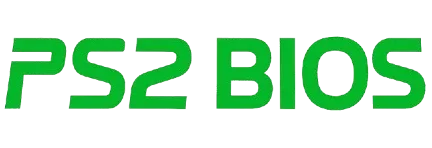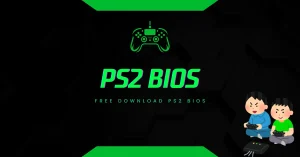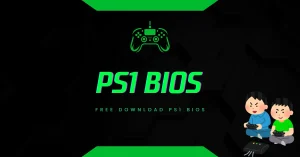What PS2 BIOS Version Provides the Best Game Compatibility?
Choosing the right PS2 BIOS version is crucial for running your favorite PlayStation 2 games without errors or crashes. Different BIOS versions affect game compatibility based on console regions like NTSC-U, PAL, and NTSC-J. Understanding which works best is key.
What Is PS2 BIOS and Why Does Its Version Matter?
The PlayStation 2 BIOS is the console’s system firmware. It manages hardware initialization, game loading, and system functions. When using emulators such as PCSX2 or AetherSX2, the BIOS file acts as the bridge between the game and your PC or device hardware.
Each BIOS version corresponds to specific console models and regions. Sony released multiple BIOS versions to match different markets and hardware revisions. This variation impacts how games behave on emulators because some games check the BIOS region to allow or deny gameplay.
Main PS2 BIOS Regions and Versions
The PS2 BIOS versions are primarily divided by region. Here are the main types you’ll encounter:
- NTSC-U (North America): Example version: SCPH-70012
Compatible with PS2 games released in the USA and Canada. The NTSC-U BIOS supports 60 Hz refresh rate games typical in North America. - PAL (Europe, Australia, and parts of Asia): Example version: SCPH-70004
Supports games designed for the PAL region, usually running at 50 Hz. This BIOS handles regional formatting differences and language settings for European markets. - NTSC-J (Japan and Asia): Example version: SCPH-70000
Covers games released in Japan, South Korea, and other Asian countries. NTSC-J BIOS uses a 60 Hz refresh rate but has differences in language and game compatibility compared to NTSC-U. - NTSC-C (China): Example version: SCPH-70006
Designed for games officially released in mainland China. This BIOS is less common but important for players with titles from this region.
How BIOS Versions Affect Game Compatibility?
The BIOS version impacts compatibility in several ways:
- Region Locking: Some games only run if the BIOS region matches the game’s region. For example, a PAL BIOS may not load NTSC-U games unless region checks are disabled.
- Language and Display Settings: BIOS files control default system language and screen output format (PAL or NTSC), affecting game menus and videos.
- Game-Specific Features: Certain games use unique hardware or software calls supported only in specific BIOS versions.
- Emulator Behavior: Emulators use BIOS files to mimic the console environment. Using the correct BIOS ensures games boot and run as intended.
Which BIOS Version Offers the Best Compatibility?
No single BIOS version covers all PS2 games perfectly. However, some versions provide broader compatibility across multiple games within their region.
- NTSC-U (SCPH-70012) is considered very stable for North American games and supports many titles without major issues. It also handles most NTSC-U region games smoothly.
- PAL BIOS (SCPH-70004) is the best choice for European and Australian games. Some PAL games rely heavily on BIOS features unique to this version, making it necessary for accurate emulation.
- NTSC-J (SCPH-70000) offers excellent support for Japanese titles, including many games that never released outside Asia. This BIOS handles unique language scripts and some Japan-exclusive hardware calls.
- NTSC-C (SCPH-70006) is more specialized but essential for compatibility with games officially released in China.
Using Multiple BIOS Versions for Better Coverage
Because of regional restrictions, many gamers use multiple BIOS versions to maximize compatibility. For example, running both NTSC-U and PAL BIOS on PCSX2 allows playing a wider range of titles from different markets.
Emulators typically allow you to select the BIOS at startup, so switching between versions is easy. This flexibility helps run:
- North American games with NTSC-U BIOS
- European games with PAL BIOS
- Japanese games with NTSC-J BIOS
This method avoids compatibility errors and region lockouts.
Recommended BIOS Versions by Region and Model
Here are some commonly recommended BIOS files for each major region, based on console model numbers:
| Region | BIOS Version | Model | Compatibility |
| NTSC-U | SCPH-70012 | North America | USA/Canada games |
| PAL | SCPH-70004 | Europe | EU, UK, Australia games |
| NTSC-J | SCPH-70000 | Japan | Japan and Asia exclusive games |
| NTSC-C | SCPH-70006 | China | Mainland China official releases |
Using these BIOS versions ensures the best match for games from those regions.
How to Choose the Right BIOS for Your Games?
- Check the Game Region: Identify where the game was released. Most PS2 discs display region codes, such as NTSC-U or PAL.
- Match BIOS Region: Use a BIOS file that matches your game’s region for best results.
- Test Compatibility: Some games may run on other BIOS versions but may have glitches or crashes. Testing can confirm which BIOS works best.
- Use BIOS Sets: If you own games from multiple regions, keep multiple BIOS versions ready to switch between.
Legal and Ethical Considerations for Using BIOS Files
To legally use PS2 BIOS files, you must dump them from your own PlayStation 2 console. Downloading BIOS files from unofficial sources is illegal and unsafe. Dumping tools like BIOS Dumper apps running on PS2 can extract the BIOS to your USB device.
Using BIOS files from your own console ensures:
- You comply with copyright laws.
- BIOS files match your hardware, avoiding incompatibility.
Summary and Final Tips
- The PS2 BIOS version affects game compatibility by region and model.
- NTSC-U, PAL, NTSC-J, and NTSC-C BIOS files cover most game regions.
- Using multiple BIOS versions improves your chance to run all your games smoothly.
- Always use legally dumped BIOS files from your own console.
- Test your games with different BIOS files if you experience issues.
Choosing the right PS2 BIOS version is essential for accurate and enjoyable emulation. Start with BIOS files that match your game’s region, and expand your collection for broader support.
- Why Does AetherSX2 Say “Missing BIOS” Even After Adding It? - September 23, 2025
- How Do Developers Test Emulators Without Using BIOS Files? - September 23, 2025
- Can You Transfer a PS2 BIOS Between Different Consoles? - September 23, 2025






![PS2 Emulator Download for PC | PCSX2 Emulator [Official] PS2 Emulator Download for PC PCSX2 Emulator [Official]](https://bios-ps2.com/wp-content/uploads/2025/10/PS2-Emulator-Download-for-PC-PCSX2-Emulator-Official-300x157.webp)